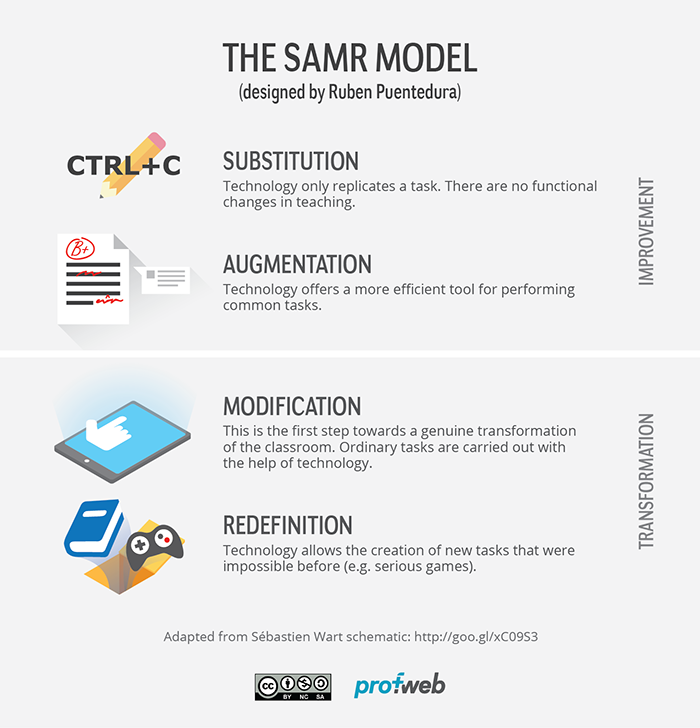Serious Games in College Education and Research – What’s Out There?
In the fall of 2016, I attended the CIRTA Colloquium (Communauté pour l’innovation et la recherche sur les technologies dans l’enseignement/apprentissage) at Université Laval. One of the streams was devoted to digital game-based learning, in collaboration with the Serious Games Society. Here, I propose to address this topic in terms of possible benefits for the learner, while retracing a set of games available to colleagues across the college network.
Why Turn to Games?
Games have been around for millennia. Children learn through play from very early on in their lives. Afterwards, board games teach us to plan strategies, interact and negotiate to win.
Game-based learning is a pedagogical strategy that is increasingly used in education. Gamification allows learners to associate different stimuli with learning, which increases intrinsic motivation and promotes long-term memorization. Game mechanics encourage potential interactions with the player-learner in order to create a fun experience – fun being an integral part of the game.
In a pedagogical context, video games have opened another door by adding real-time feedback based on participant choices. This scripting of learning in a game sometimes isn’t taken seriously. Let’s not forget, however, that the game is only a means, not an end in itself. It goes hand in hand with the pedagogical strategy. This implies, first of all, planning a pedagogical scenario that culminates in a plenary session with the player-learners.
Certain researchers try to define fun:• How to write a game that promotes learning while providing fun?• How to develop a game that entertains, encourages repetition of exercises and creates links between concepts and emotions, while also fostering in-depth learning?
According to Puentedura’s SAMR model, serious games are at the highest level, redefinition (R):

The SAMR model (adapted from Sébastien Wart schematic http://goo.gl/xC09S3).
Redefinition concerns uses where the teacher rethinks their course and creates new tasks that were not possible before. Have you tried imagining your course turned into a serious game?
Towards a Typology of Serious Games
According to Margarida Romero, professor of Educational Technology at the Faculty of Education at Université Laval, there are 5 ways to integrate games in education:
- Through the use of serious games
- Through the creation of serious games in class
- Through educational gamification
- Through the creation of digital games as a learning activity
- Through the use of commercial educational games
Let’s consider the first category proposed by Romero: the use of serious games. Several researchers carry out studies on 3 usage types:
- Serious diverting games
- Serious modeling games
- Serious games
The idea of attempting to define a typology of games diverted for utilitarian purposes is part of an objective to construct evaluative models on how to design, distribute and use serious games in different ecosystems, as in the fields of education and health.
The following table presents some game categories with examples:
| Description | Examples |
|---|---|
| A game is diverted to fulfill an educational function. | Sing star to teach English pronunciation. |
| Angry Birds to teach physics notions. For example, with the right of a single shot, users must calculate the velocity vector with the horizontal and vertical components. Then, they perform an attempt and receives an interactive result of success or failure. | |
| WOW: World of Warcraft in school. Questions and reflections on its appropriation in a teaching context. | |
| ICO in cognitive psychology on Playstation 2 and 3; interesting because of its therapeutical benefits. | |
| Raspberry Pi III : programming in Scratch et Python to create games (as a learning object) |
| Description | Examples |
|---|---|
| Existing games are diverted to fulfill a utilitarian function (for example, to allow students to develop concrete skills). | Monopoly: negotiation, communication, crisis management |
| Namco Bandai (Pacman): arcade therapy delays cognitive degeneration in the elderly. | |
| Minecraft Education Edition: educational version of Minecraft specially designed for classroom use; it promotes communication and collaboration. |
| Description | Examples (CCDMD) |
|---|---|
| Game elements are infused with a “serious” intention (for instance, pedagogical objectives). | Serious games:
|
| Simulations: | |
Case studies:
|
|
Guided or interactive questionnaires:
|

Screenshot of the serious game Electoral Campaign II developed by Collège Ahuntsic with support from CCDMD.
Game Research Methodology
To evaluate the impact of games on learning, the most frequently used and simplest methodology is to:
- Administer a pre-game test to participants
- Allow participants to play the game extensively and repeatedly
- Administer a post-test (often identical to the pre-test)
- Analyze data and assess the level of learning achieved
Current research tends to show that the results obtained during post-tests are often better than those obtained during pre-tests, or equivalent. This demonstrates that games favour learning or, at least, do not have the opposite effect.
Another data-gathering method, which operates during the game, includes:
- Information collection while the learner is playing, through the use of sensors and a camera that tracks eye movement.
- Data analysis and modification of the game parameters in order to adapt it based on the reactions of the player-learner.
Are you interested in using gamification or serious games in college teaching? Refer to Alexandre Dal-Pan’s factsheet to find related stories and articles published on the Profweb website.
Have you integrated games into your teaching strategies? Don’t hesitate to share your experience in the Comments section.

